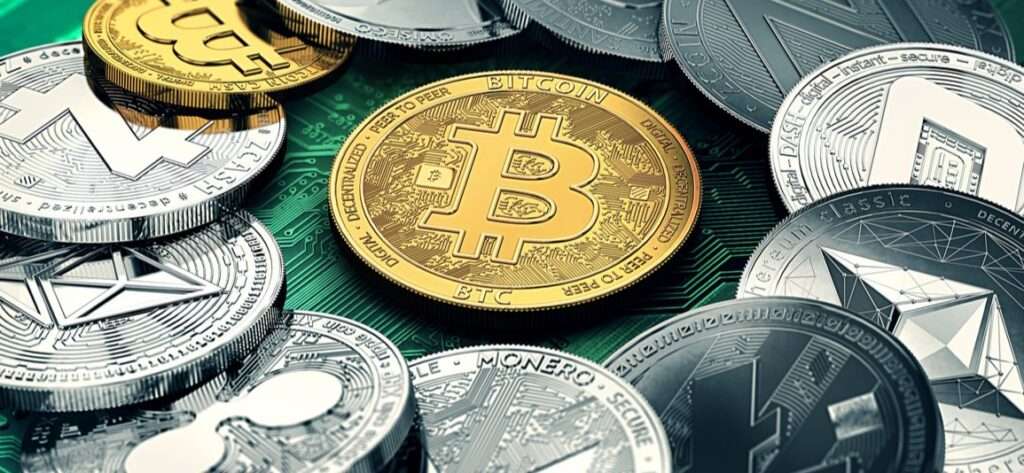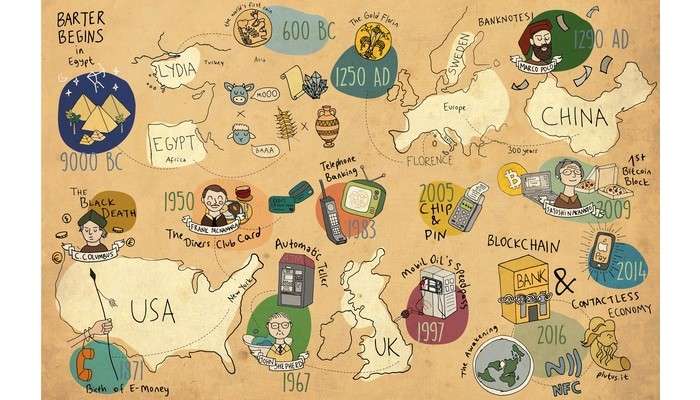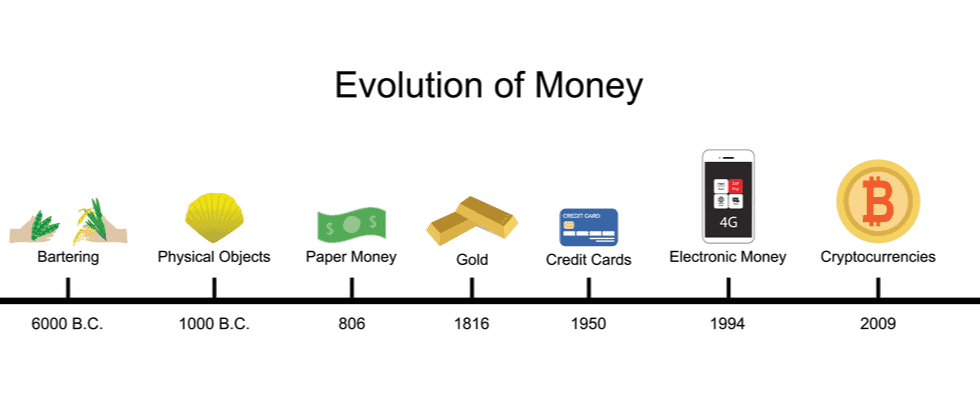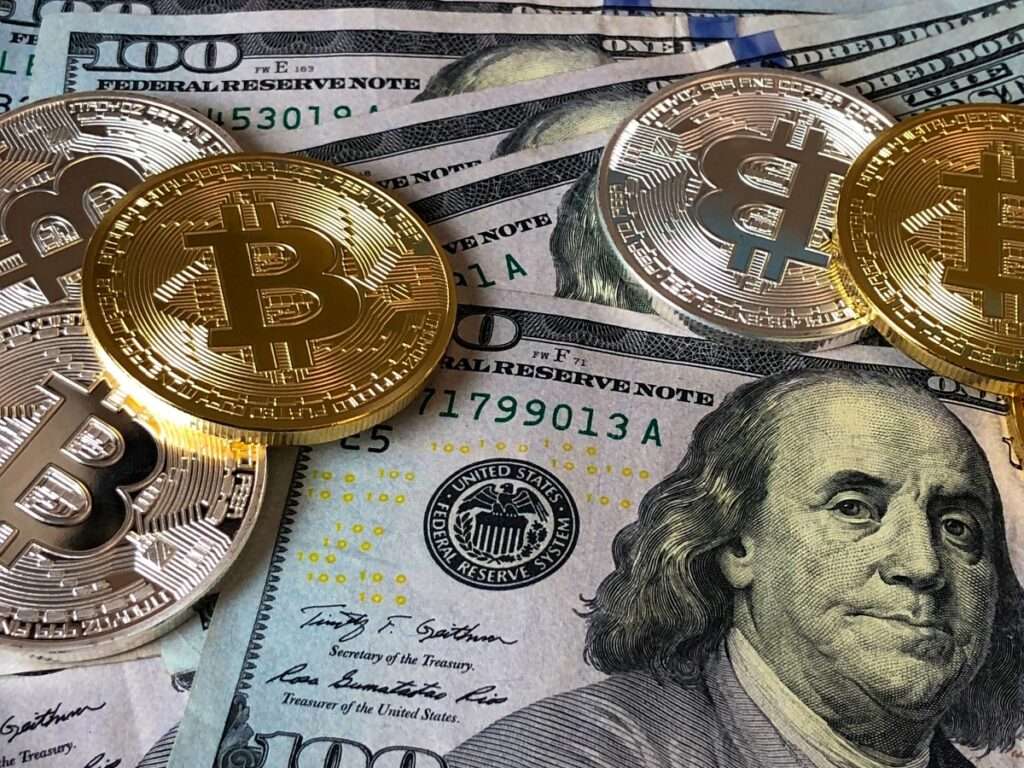Introduction
In addition to money, human ingenuity was utilized in its creation. It’s the transfer of power between countries. This honest instrument is a way to trade and value wealth. It plays a role in the intricate economic networks that make up our global.
Money’s history goes back thousands of years, from our ancestors’ simple trade systems to today’s digital cash. This amazing story follows how humans have grown, with times of new ideas, changes, and big shifts. We started by swapping goods and services. Now we have complicated money systems. Money has helped push us forward changing our communities, cultures, and economies in big ways.
It’s in this big picture of history that we start our journey. We’ll see money change from when early humans traded stuff to today’s super-fast digital deals. Money has changed a lot – from things you could hold to ideas you can’t touch, and from being used in small areas to ruling the world. This story shows how clever people are, what society needs, and how technology gets better. All this leads to the tricky connected money world we live in now.
Our article will show how money evolved beyond its primary role as a medium of exchange. Now it has a huge impact in bringing together different cultures and emerging economies and even changing the way countries communicate. Looking back, we see how money reflected and influenced those societies leaving it a lasting mark that still shapes our world today.
This article shows that money has dramatically changed from a simple trading system to a complex digital currency, touching countries and economies along the way We better understand the complex relationship between money and human civilization through key periods of we observe in this change.

The Dawn of Exchange: Barter
Long before the development of sophisticated monetary systems, human societies had operated a system of direct exchange — barter.
This ancient practice involved trading goods and services without the involvement of money as an intermediary. Though it may appear primitive by our current standards, barter acted as the very basis of early economies. It gave way to more advanced financial systems that were designed years later.
The roots of barter stretch back to the very fabric of human civilization. When men first began to change from food gathering to settled agricultural life, with this growing division of labor came enhanced production that resulted in a large variety of commodities.
Specialization having increased further; it was realized that supply-deficient necessities had to be exchanged for surpluses. It was therefore very natural for barter as an economic doctrine to come into existence.
Another challenge of the barter system included another difficulty that arose in developing a common measure of value. Since different goods had different levels of utility, it was hard to establish what constituted an equal trade. For example, in one community, a cow may be equivalent to several bushels of wheat while in another, they are valued differently. This lack of uniformity stifled trade and left room for one party to reap where they did not sow.
The barter system was also a poor way to store wealth. Perishable goods and other commodities that can rot and spoil such as food and livestock were unfeasible as long-term stores of value. For this reason, it proved an obstacle to economic planning and investment since people were unwilling to stockpile goods for which the value will diminish with time.
Nevertheless, barter lasted in many societies for thousands of years. The Mesopotamian, Egyptian, and the Indus Valley civilizations all used barter as a principal method of trade. Farmers, craftsmen, and merchants among these societies regularly make direct barters of their goods. An instance would be when an Egyptian farmer traded surplus grain for the pottery or tools of other villagers.
Barter did not just stop with the exchange of goods. In some cases, services were bartered. Skilled artisans like blacksmiths or carpenters could offer their services in exchange for food, clothing, or whatever else was agreed upon. Service barter played a major role in bringing about specialization and co-operation through economic dependence among members within a community.
As societies became more complex, restrictions on exchange became more pronounced, although this was an important factor in the growth of early economies. The emergence of trade money, and ultimately the more complex monetary system we use today, was driven by the recognition of the need for a more efficient and more reliable system of exchange.
Barter’s Birth and Limitations
The issue of barter had a number of limitations; one was the problem of valuation, the other was the difficulty in having a double coincidence of wants and lastly having to store value for future use. These challenges made people start looking for better mediums for transactions and hence commodity money.
Commodity money refers to physical objects that have an intrinsic value and serve as money. Unlike fiat money which gets its value from government legislation, commodity money carries worth due to its properties or usefulness.
Precious Metals: The Foundation of Currency
Commodity money, of which precious metals are by far the most classic example, has been the most common form of money for thousands of years. Precious metals were simply the best materials available at the time that could satisfy every one of the necessary attributes a viable monetary system requires. They were scarce enough (but not to such an extreme that it would prevent their usage), divisible enough, durable enough, and their appeal came from reasons far beyond their use as money in and of itself.
Not only this, but they can be made into coins relatively easily since metalwork is easy to do with simple tools. Coins allowed for much greater standardization in money (and therefore made transactions easier and cheaper) than previous forms like grain or livestock often used in early economies.
The use of precious metals as currency dates back to the ancient world. The Lydians, an Anatolian people, are given credit for minting the first coins around the 7th century BC. These early coins were found to be made of electrum, a naturally occurring alloy of gold and silver. Coinage was an important advancement in monetary systems because it provided a new form with which to measure value that was easy to recognize and divide.
Gold and silver reigned as the international currency for hundreds of years due primarily to their inherent qualities. They were relatively rare and thus stable in value (therefore making them a store house of wealth), easily portable over long distances, durable enough not to break down when used in coin form year after year, divisible allowing for easy usage in daily commerce (a gold coin could be cut into smaller pieces) and lastly fungible i.e. one piece was equivalent to any other piece.
However, they were limited by how much could be mined at any particular time period thereby forcing civilization or geographic areas on a type of “fixed” money supply and limiting growth.
Livestock and Other Commodities
Precious metals may have been the ultimate in early form of commodity money, but in many cultures other goods also served as a form of the abstract unit of account that we call money. For example, wealth was often counted in cattle or sheep and goats, and given that the wealth could be moved about with ease (the animals themselves), it’s not surprising that many societies used livestock as a medium of exchange when no precious metal was available.
Other commodities used as money included grain, salt, shells and even furs. These items differed in their desirability as media of exchange due to differences in durability, divisibility and portability. Salt was necessary for human survival and was a common medium of exchange in many ancient civilizations. However salt’s bulkiness and susceptibility to spoilage made it an inconvenient medium of exchange for long distance trade.
Challenges and Advantages of Commodity Money
Commodity money solved several problems of the barter system. It offered a more uniform unit of account, as well as making it easy to see when one medium of exchange was being used less frequently or was falling out of favor. In addition to serving as a unit of account, items used for this purpose became storehouses for wealth and were often dividable for use in daily transactions.
However, commodity money had its own disadvantages. The value of these commodities varied with time, and it was difficult for traders and investors to predict what their money would be worth in the future. If a country experienced a particularly fruitful harvest of grain, then its value as currency would plummet. Additionally, because these forms of currency could often be heavy or take up plenty of space (particularly when large sums were involved), transporting and storing them could be quite inconvenient and costly.
Counterfeiting posed another hurdle. Once people began to rely on certain goods as currency, there would always be some opportunists who tried to invent more wealth by creating counterfeit versions of those goods—hence diluting the market for real ones—and passing them off as authentic.
Despite these limitations, commodity money was a basic, yet fundamental building block for the development of early economies and trade. It also underpinned more complicated monetary systems that would emerge during subsequent centuries. Commodity money was eventually replaced by representative money and fiat currency, but it remains an essential part of our intellectual heritage when considering the nature of money and its functions.
Coinage: A Quantum Leap
Money changed from large commodity-based totally structures to flat foreign money, a pivotal moment in human monetary records. This new concept solved the troubles of commodities and the usage of valuables as forex and opened the door to extra advanced and green alternate.
How Coins Came to Be
People came up with coins to solve the issue of using valuable goods as money. By turning precious metals into standard easy-to-divide, and easy-to-carry units, coins became a much more useful way to exchange things. While experts still argue about where coins first started old records suggest the ancient Lydian kingdom in Anatolia (now Turkey) was one of the first places to use this game-changing idea.
The Lydians, who were skilled metalworkers and traders, realized that electrum could be used as currency. Electrum is a natural aggregate of gold and silver. To reveal what became contained within, they began molding those metals into set weights and staining them with diagnosed symbols. Coins have been the result of this novel idea, a widespread improvement that would reshape global economies.
How Coins Changed Trade
The effect of money on enterprise is difficult to overstate. The money provided a manner for people to cost values that everybody could agree on and easily categorize. Because of this, connections can now happen on a bigger scale. Buyers should without problems compare prices, and dealers ought to now set particular prices. As wealth have become greater same anywhere, it contributed to financial growth and specialization. This brought about the development of markets and change systems.
Also, the money was easy to find. This meant that merchants could send their money far and wide without problems. Unlike large, heavy items, the money was easy to carry. This reduced the trade deficit. As a result, people tended to interact more, which sustained the economy and helped blend cultures.
Standardization and Divisibility: The Cornerstones of Coinage
Two main factors played a major role in the coin’s popularity: uniformity and ease of disassembly.
Standards: The Lydians introduced the idea of printing government money on money. This coin assured the weight and metal content of each coin. Such standards ensured that each currency remained at a certain value. This eliminated the need for checks and reduced the possibility of fraud. As money spread to other cultures, people adopted this practice of values. It introduced a single currency that facilitated trade in large areas.
Divisible: Trade will be performed in different sizes due to the fact money could be divided into smaller pieces. This element contributed greatly to the ability to promote goods and offerings in different fee tiers. For instance, people had been capable of do their accounting and alternate via exchanging one huge forex for plenty smaller ones. Because outlets should alter their prices in small steps, the cash department changed into additionally able to enhance costs.
The blend of standardization and divisibility gave coins a big edge over commodity money as a way to trade. This cut down on costs, boosted business, and built trust between those buying and selling. Because of this, coins caught on across the old world setting the stage to build complex economies and cultures. Coins were much more useful and dependable than trading goods. This had an impact on how societies grew and changed over time.

The Transition from Tangible to Representative Money
The conversion of physical goods into paper currency was as revolutionary as currency. The money provided useful and standard currency but still had value because of its metal content.
Paper money, however, is just a symbol that stands for value. It has no real worth beyond the amount printed on it.
The shift from physical to symbolic money happened for several reasons. A main driver was the rise in trade and the need for a more effective and easy-to-carry form of money. Carrying and keeping large amounts of coins was a hassle making them not so great for big deals. Paper money being lighter and smaller, offered a handy fix to this issue.
The Role of Governments in Issuing Paper Currency
Paper money was created and distributed primarily by governments. At first, promissory notes were frequently issued by way of banks as paper money. These notes represented a claim on a particular reserve quantity of gold or silver. But as governments took manipulate of the monetary structures, they commenced issuing paper money. This currency turned into subsidized through the whole faith and credit of the state.
This move to government-issued fiat currency changed into a big alternative to the commodity-sponsored system. Fiat cash gets its price from government order, now not from what it is worth on its own. This gadget may result in inflation if now not treated nicely. But it also lets governments have greater freedom to control the money delivered and boost the financial boom.
Advantages of Paper Money
Compared to coin-based systems, paper money had some advantages. You could bring it with you and use it to make both major and minor purchases. Additionally, you can print it in limited quantities, making pricing and payment more flexible. Additionally, governments may be able to exert a more effective control over the financial system by printing paper foreign currency, even though they should limit the amount of cash that is made available.
Another good thing about paper money was that it could boost the economy. By putting more money into circulation, governments could get people to spend and invest more, which would make the economy more active. But this power could also cause inflation if not used.
Disadvantages of Paper Money
Paper cash brought many benefits; however, it also had a few downsides. People are involved in masses about fake money. Unlike cash made of treasured metals, paper cash did not have any real value, so it was easier to copy. Governments had to give you smart ways to stop counterfeiters and preserve humans trusting the money.
Another problem was the risk of prices going up too fast. If the government printed too much money without making more stuff to buy, the money would be worth less. This meant things would cost more, which could hurt both people and businesses.
What’s more, trusting the government played a key role in paper money’s success. If people lose faith in the government’s ability to keep the currency’s value stable, they might stop believing in the system, which could lead to economic problems.

The Digital Age: Electronic and Cryptocurrency
The Evolution of Electronic Payment Systems
Payment methods entered a new technological way to the virtual era. In the vicinity of traditional cash and tests, digital price methods have emerged as possible options.
Debit cards, credit cards, and electronic fund transfers (EFTs) became common causing a revolution in how people and companies handled money matters.
These electronic payment systems have many benefits over physical money. They worked faster, provided more safety, and allowed transactions over long distances. Debit cards let people use money in their bank accounts right away, while credit cards give short-term loans and protected purchases. EFTs enabled big transfers between banks and financial firms making business operations smoother.
The rise of Internet banking and online shopping pushed electronic payments to grow faster. Digital wallets and mobile payment apps came out giving easy and safe ways to buy things. These changes shook up how stores work and opened the door to a world without cash.
The Emergence of Cryptocurrencies and Blockchain Technology
The Rise of Cryptocurrencies and Blockchain Technology
Cryptocurrencies are a big shift from old money systems. These digital coins work without a central power like a government or bank running them. Bitcoin, the first and most famous cryptocurrency brought in blockchain technology. This is a shared record that keeps track of trades safely and openly.
The generation in the back of cryptocurrencies is known as blockchain. It creates a decentralized community in which numerous computer systems store ledger copies. Because hackers are not able to change the facts without controlling the majority of the community, this dispersed device improves protection.
Cryptocurrencies can also offer several blessings. They can accelerate and reduce prices for international money transfers skipping traditional banks. Also, cryptocurrencies can carry economic services to humans without financial institution bills, as those virtual currencies do not need normal bank money owed to work.
Compare and Contrast Traditional and Digital Currencies
Central control and regulations govern traditional currencies, such as government-issued ones. The government has pledged to support them and keep their value. Applications for cryptocurrencies. Blockchain technology provides its power, making it decentralized. The value-added technology behind it is what people want.
Regular cash remains more stable in rate than cryptocurrencies, which could trade masses. But cryptocurrencies give you more see-via and stable transactions because of blockchain. Also, governments can manipulate and set rules for everyday money, whilst cryptocurrencies artwork on their very own.
The Potential Impact of Cryptocurrencies on the Future of Money
The growth of cryptocurrencies might shake up the usual money scene. They could test how strong regular money is and change how money works around the world. But for lots of people to use cryptocurrencies, we need clear rules better tech, and people to accept them in the market.
If everyone started using cryptocurrencies, more people would participate in money-related activities, sending money can be cheaper, and more ways for money to move around may be desired. They might also help set new standards in a lot of different areas, like keeping an eye on products or sending money to other countries.
But we need to fix some things before everyone starts using cryptocurrencies. These include how much their value changes keeping them safe, and making sure there are good rules. Governments and big money companies are looking into ways to fit cryptocurrencies into how we handle money now while trying to avoid any problems they might cause.
Money’s future includes a mix of old-school and digital cash. As tech keeps changing how these two types of money work together will shape the financial scene in the coming years.
Conclusion
The transformation of cash from an easy approach of trade to the complex virtual globalization it’s far nowadays demonstrates that human beings are aware of and prompted to paintings more efficaciously.
Each step in this growth, from the hurdles of finding matching wants in barter to the uniform and splittable nature of coins has left its mark on human progress.
The shift from real goods to paper money that stood for value was a big change. Governments took charge of making money. This time saw banks grow and new money tools come about setting the stage for modern economies.
The digital age has caused a revolution in how we pay, with electronic payment systems and mobile wallets changing the payment scene. Cryptocurrencies and blockchain technology have challenged old ideas about money bringing in decentralized systems that could reshape global finance.
Looking ahead, technology will have an impact on how money evolves. New tech like AI, blockchain, and others will bring new digital currencies and ways to pay. Central bank digital currencies (CBDCs) are becoming more popular aiming to link traditional money with the digital world.
The future of money will see greater variety, with cash virtual currencies, and perhaps even biometric charge systems existing facet through facet. As finance and tech come together, they’ll keep arising with new ideas making things less difficult, safer, and greater reachable for every person. But we need to address troubles like online protection, rules and guidelines, and helping humans apprehend virtual cash to make sure we are able to switch to this new cash scene without troubles.
The ultimate factor is the way wealth adjusts to our desires and aspirations as a society. Giving you a clean mindset on how we can manage money will go a long way towards achieving a win-win destiny for all and managing themselves appropriately as we consume the resources of the 21st century the difficulty of the solution.
